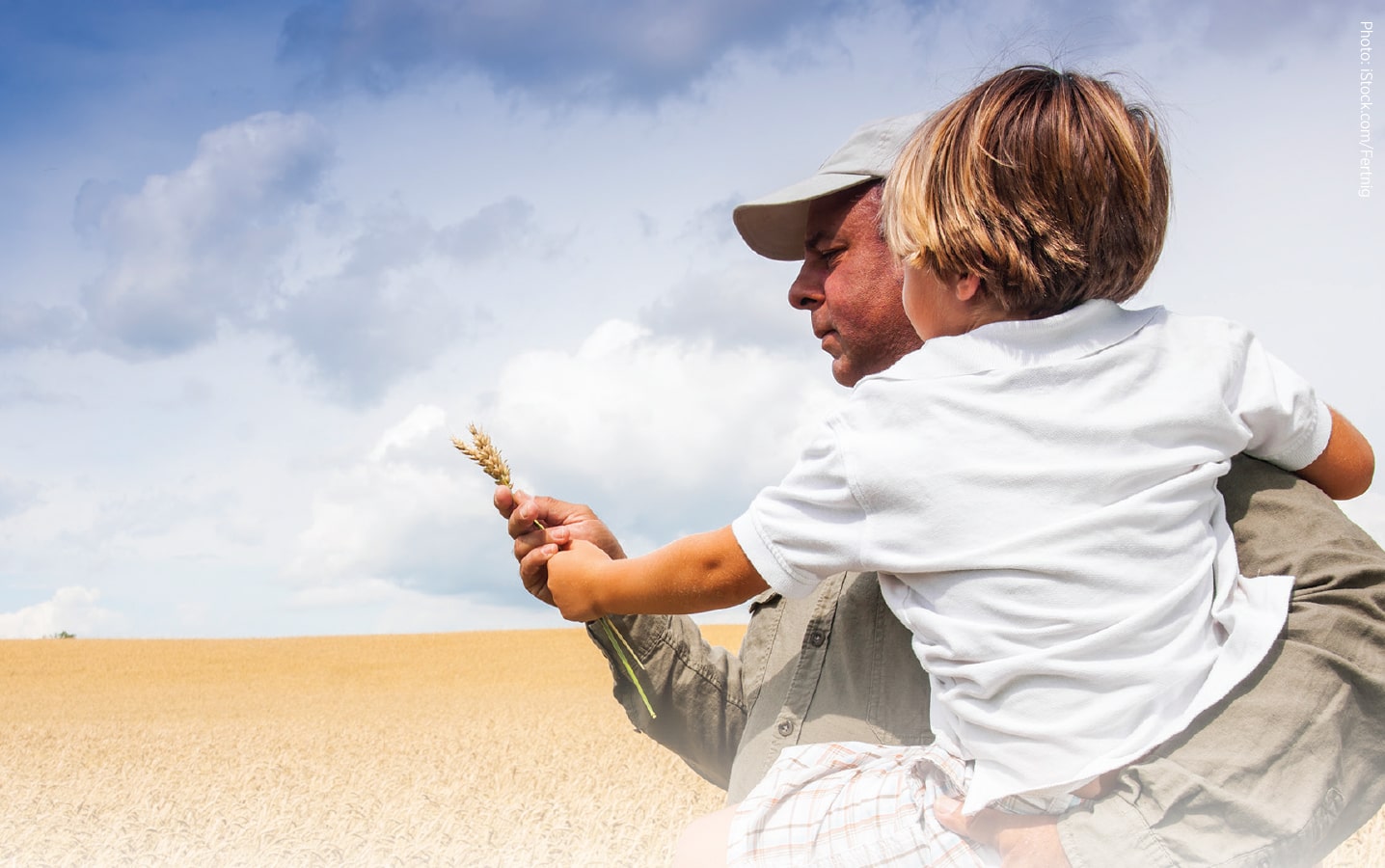What sustainability means to me
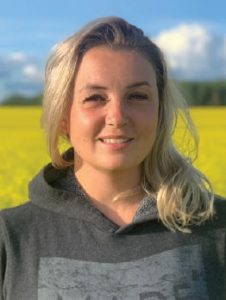 Christi Friesen
Christi Friesen
Brownvale, Alberta
Christi Friesen says sustainability is really important to them.
“Our farm is our legacy,” she says. That is why their farm management decisions are made for the good of the land and to ensure opportunities for the next generation.
“Our daughter grew up on the combine, and she’ll spend 18-hour days in the cab with me. She cries every fall when it goes into the shed,” Friesen says. “We want to protect that strong connection. We want to be able to hand this farm to our kids and make sure it’s something they can build upon and do something with.”
The Friesens have an Environmental Farm Plan, which helped them acquire section control for the sprayer. “It allows us to prevent overlap, which could be half a jug or a jug per field. The savings really add up,” she says.
Their sustainable approach means making a lot of decisions that are just “common sense,” she says. “For example, we don’t fill up the sprayer anywhere near the water source.”
They follow 4R for fertilizer management, which saves money and time, and makes fertilizer “as efficient as possible,” Friesen says. “4R is so widely accepted among farmers because the guidelines are so cut and dry, and it can work on a farm anywhere in Canada.”
“Our daughter grew up on the combine, and she’ll spend 18-hour days in the cab with me. She cries every fall when it goes into the shed. We want to protect that strong connection. We want to be able to hand this farm to our kids and make sure it’s something they can build upon and do something with.”
The Friesens also signed up for sustainability programs that give their canola access to the European biofuels market. “It’s a voluntary program, and we decided to participate because it could mean more market access for us.”
Even the new Responsible Grain Code of Practice, which is currently collecting farmer input, is something she’s looks at with an open mind.
Friesen sees all of these programs as ways to develop new relationships. “If you don’t have relationships, you don’t have a business,” she says. “We’ve been given opportunities to make special grain sales because of the relationships we’ve worked to create.”
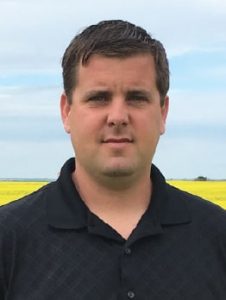 Dean Roberts
Dean Roberts
Coleville, Saskatchewan
Dean Roberts has participated in a few sustainability initiatives over the years but they all seemed to be lacking something. “It felt like we were just checking boxes and not really doing anything different,” he says. “Also, in the end, I had the same market access as someone else who wasn’t following any of the recommended practices.”
That said, he has his own personal and economic reasons for following sustainability practices, especially when it comes to land use. “We have acres that are maybe profitable one year in 10, so I’m looking at tame hay and possibly trees for those acres,” he says. “The challenge is that acres that don’t grow crops very well don’t grow grass well either, so establishment has proven difficult. Honestly, they never should have been broken in the first place.”
Roberts likes having the natural areas on his farm. “The key for me is that the farm functions within the ecosystem of the area and also helps to support that ecosystem,” he says. “It is difficult to put an ROI to these non-economic parts of the farm, but having them makes me feel better.”
Extending these practices to rented land is also important, he says. “Talking to landowners about taking acres out of production can be a challenging discussion,” Roberts says, “but it comes down to the relationship with the landowner. I want to treat the land that I rent the same as the land that I own, and for the most part, my landowners are pretty good with it.”
He adds that new technology makes it easier than ever to work around non-farmed spaces, even within fields. Roberts is looking into First Pass from Verge, which maps out a field and determines the optimal travel pass so you don’t waste machinery time.
“The key for me is that the farm functions within the ecosystem of the area and also helps to support that ecosystem. It is difficult to put an ROI to these non-economic parts of the farm, but having them makes me feel better.”
Overlap control systems have been a huge economic benefit for the farm. “We used to have 12 to 13 per cent overlap of seed and fertilizer on some of our more challenging fields, but with sectional control we’ve got that down to five per cent,” he says. “I’m stoked about that.” With sprayer nozzle control, farmers can sweep the boom over a slough and have it turn off. It means paths can stay straight while product only goes where it’s needed.
Roberts hasn’t given up on the sustainability programs either. His local agronomy team is partnered with Land O’ Lakes, which is launching its Truterra program in Canada this year. He will be looking into it.
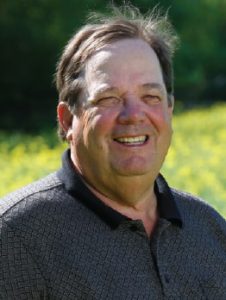 Chuck Fossay
Chuck Fossay
Starbuck, Manitoba
Chuck Fossay says farmers have a lot of practices they can do to be sustainable and be more environmentally friendly. “But every farm is different,” he says, “and what works for me may not work for my neighbour.”
Fossay has always used crop rotation as well as 4R practices to improve profitability and long-term sustainability of his business. “We usually grow four to seven different crops every year. This allows us to rotate our fields so that we have three to four years between similar crops,” Fossay says. “It allows us to control weeds and insects with different chemical combinations and also different types of crop competition.” With rotation between crops, it also usually means higher yields – which improves profitability. “And the diversity is good for the environment,” Fossay adds.
“I think Canadian farmers get a bad reputation because of things farmers in other countries have done. We have to make a better effort to describe to consumers what we do and why we do it, rather than always having to defend ourselves.”
They’ve been following the fertilizer principles of 4R – which is Right Source at the Right Rate, Right Time and Right Place – for 30 or 40 years “because it just makes good economic sense,” he says. He uses only those products that each crop needs and at rates such that each pound of fertilizer provides an economic return. He applies fertilizer in the spring or late in the fall and incorporates the fertilizer into the ground where the crop can use it. This means more is taken up by the crop and reduces losses into the air and into drainage ditches. The goal is to maximize nutrient use efficiency with “the hope that it also reduces the impact on the environment, with less nitrogen and phosphorus going into the air and water,” he says.
Adoption of 4R fertilizer practices is an example of the good things farmers are doing in Canada, Fossay says. “I think Canadian farmers get a bad reputation because of things farmers in other countries have done. We have to make a better effort to describe to consumers what we do and why we do it, rather than always having to defend ourselves,” he says. “I hope consumers realize that we can’t go back to native prairie grass because we still need to grow the wheat to make bread and canola for oil and protein. Part of keeping the soil healthy and productive requires the use of fertilizer.”
Fossay has a strip of grass and trees along the small river that runs through the farm. This natural area captures snow and reduces soil erosion from their more contoured land. It also provides a living environment for native species of plants and animals. “It’s a part of nature that we like to preserve.”
Fossay acknowledges that his farm is fairly flat and doesn’t have a lot of potholes, so his natural spaces are well-defined and off to the side. But he says farmers in general do want to pass along their farm to children and grandchildren in the same or better shape than it was when they started.
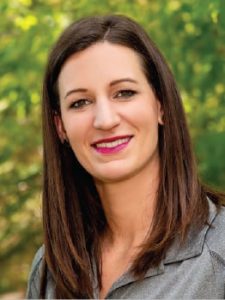 Katelyn Duncan
Katelyn Duncan
Regina, Saskatchewan
Katelyn Duncan and her family give special attention to quality of life on the farm, with the goal of maintaining a high level of job satisfaction for everyone involved. They make sure to pay competitive wages and, except for seeding, spraying and harvest seasons, try to maintain an 8 a.m. to 5 p.m. schedule with weekends and statutory holidays off.
“We recognize that a successful long-term farm business is all about partnerships. It is important that we try to maintain relationships with dealers, purchasers, accountants, bankers and ideally each other.”
“This is all part of employee retention,” Duncan says, and the retention goal applies to all staff – including family. “I work the hours I want to work, stopping before I get to the point where I dislike the job,” she says.
Even during the busy spraying season, Duncan will spray from 6:30 a.m. until 7:00 or 8:00 p.m. “All the spraying got done on time and I am still able to take time for evening activities.”
Duncan says they’ve also become a lot better at team building and workplace culture. “We celebrate birthdays. We have breakfast at the farm on Fridays. We have post-harvest and post-seeding celebrations,” she says.
While taking care of its people, the farm also strives to take care of the land. To give just a few examples, Duncan says they use a three-year crop rotation to capture the yield and input-cost benefits of that diversity. They rotate chemical groups to prevent resistant pest populations. And they use guidance technology to reduce overlap when applying inputs.
And of course, they have to make sure the farm stays economically viable. “We purchase inputs well in advance because it usually provides a cost benefit, especially for fertilizer. We also price-shop between two or three retailers,” Duncan says. Then, when selling the crop, they will compare and negotiate with various delivery points. They will deliver direct to canola processors, which is a six-hour round trip, if it provides a price premium.
“We recognize that a successful long-term farm business is all about partnerships,” Duncan says. “It is important that we try to maintain relationships with dealers, purchasers, accountants, bankers and ideally each other.”





